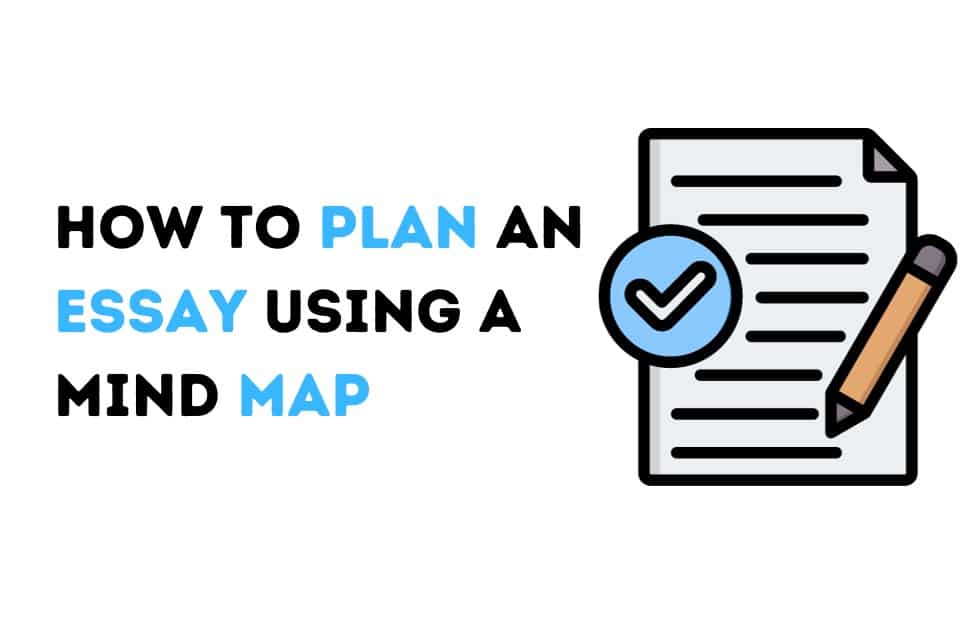Rather than linearly outlining essays, visually mapping interconnections between topics and ideas using a mind map proves an impactful planning technique. Centered on core themes radiating outward as branches, mind maps engage more of the brain’s creativity. Their flexibility adds and rearranges thoughts fluidly. For students feeling overwhelmed, “write an essay for me” services can create mind maps to organize your thoughts. Following a drafting session, mind maps offer convenient visual cues for developing content further. Learn how mind mapping’s blend of structure and creativity lends itself perfectly to essay planning from both macro and micro vantage points.
Table of Contents
Choose Central Idea or Image
To commence mind mapping an essay, identify the core singular idea or main image encapsulating the essence of the planned piece. This central concept could be conveyed in an individual word, brief phrase, or representative visual symbol. For example, the main theme “justice” or an icon of scales could anchor an essay on ethics. This focal point grounds the entire mind map, providing a stabilizing nucleus as thoughts radiate outwardly. All branching ideas should directly relate back to this originating seed.
Map Main Argument Branches
Around the central concept, add branching lines or bubbles conveying your main arguments, points, or topic areas relating to the core theme. These will form the essay’s pillars so should represent 3-6 of the most compelling supporting angles. For instance, around “justice” add branches like equality, fairness, lawfulness, morality. Add dimensions like length, thickness and color to differentiate importance of branches. Maintaining these key ideas anchoring the discussion provides helpful visual structure as details fill in.
Develop Supporting Sub-Topics
From each main branch, create offshooting sub-branches encompassing more nuanced supporting points and examples. For example, under “equality” add layers like equal opportunity, discrimination, equity vs equality. Nest further sub-layers as ideas take shape. Mind maps grow organically versus consecutively like outlines. Visually cluster related subsets near one another to identify logical grouping when drafting structured paragraphs. Keep adding new branches as thinking evolves, rearranging layout as needed.
Integrate Notes and Quotes
Surrounding the nested branches, integrate notes capturing specific concepts, quotes, examples and sources you plan to research and potentially incorporate as evidence within the essay. Scribble down brief related notes to guide later writing without composing long paragraphs prematurely. Pull poignant quotes from references as reminders to cite. Include possible statistic sources needing verification. This raw material populates the framework captured within branching topics.
Sketch Potential Graphics
If planning to embed any visual elements within the essay like charts or diagrams, roughly sketch their general concept and placement within the mind map structure. Bubble in captions labeling what the graphic intends to illustrate. This reminds you to draft, refine, and integrate graphical depictions as the essay develops. Outline graphics’ roles early so they flow with text logically versus becoming afterthoughts awkwardly inserted.
Color Code Key Points
Use highlighting and color coding to emphasize important branches within the map corresponding to sections requiring substantial detail or analysis in the essay. Label any weak or underdeveloped areas needing further brainstorming of strong evidence during the research phase. This built-in color scale indicates the density of discussion various branches warrant based on current exploration level. Color draws the eye to parts needing elaboration.
Focus the Thesis
With the full mind map laid out, crystallize a precise thesis statement capturing the essence of your central positioning on the topic. Write this at the center or top so it literally anchors the entire direction of the piece. The branching structure radiating outward from the thesis should represent supporting points validating and proving this overarching statement. All elements of the mind map relate directly back to the definitive thesis.
Assess Flow and Transitions
Analyze the completed mind map assessing whether branching progression provides a logical visualized flow from introduction, through key topics, to conclusion. Do color coded high points align into a coherent sequence? Do branches displaying lower levels of initial exploration fall too late in the tentative flow? Adjust and add transitional branches as needed to illustrate smooth idea connectivity. Mind maps foster seeing relationships between topics and areas needing better integration.
Convert to Outline
With a sufficiently detailed mind map completed, convert the branching diagrams into a traditional outline format conducive to tackling the writing process. Outlines provide linear final structure while retaining the relationships between topics depicted within the two-dimensional mind maps. Translate key branches into Roman numeral sections. Nested sub-topics become lettered lines of increasing indentation. Mind maps flow freely; outlines organize.
Write Following Outline Format
Referring constantly to the constructed outline for guidance, commence writing the first draft adhering closely to the established header topics and subsequent detailed flow. Flesh out paragraphs capturing the discussions mapped under each heading and subheading in the outline. Start with main topic sentences reflecting those headings then fill in supporting details and evidence. The pre-outlined structure informs paragraph length and relationship. For complex case studies, professional case study writing services utilize mind mapping for clear structure.
Add Finer Details to Mind Map
After completing an initial draft, revisit the mind map to integrate any additional sub-topics, quotes, sources, or details that emerged during the writing process. Now even more detailed from drafting, the mind map provides convenient visual reference for expanding specific sections requiring additional analysis in subsequent revisions. New branches continue evolving the piece’s scope.
Keep Mind Mapping Throughout
Beyond initial planning stages, mind mapping proves invaluable throughout the entire essay writing process as ideas take shape. Maintain a working draft mind map that grows increasingly elaborate with details to guide revision. Insert new branches when introducing related supplemental research. Use mind mapping to improve transitions between paragraph topic “clusters”. Visually managing emerging ideas this way allows essays to develop extensively while retaining cohesion.
Conclusion
While outlines provide essay structure, mind mapping unlocks creativity through multidirectional visualization of connections between topics and ideas. When initially planning an essay, mind maps allow fluid ideation. Upon drafting, they help integrate and organize details within an intuitive format. By blending logical and creative processes, mind mapping produces superior essay structure and content. The synergistic brainpower masterfully synthesizes right and left hemispheres.


